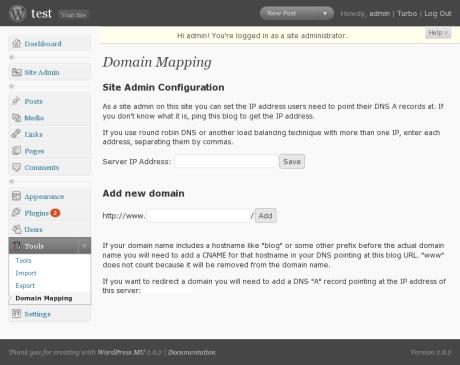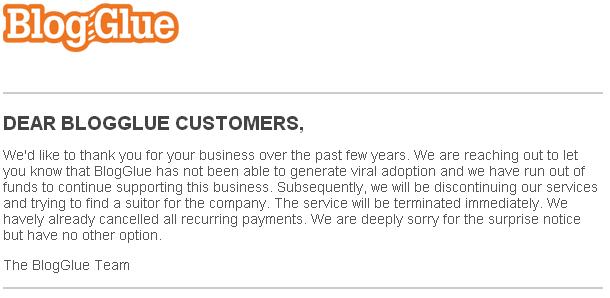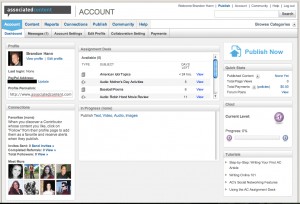I wasn’t sure if I should have called them a “who” or a “what”, but one thing’s for sure…if you’re putting content online, you should be aware of what CC is. First and foremost, copyright laws and regulations were designed years and years ago in a time where there was less to worry about in the way of content theft. We’re talking about the days before the Internet, computers and even copy machines. If someone wanted to steal your manuscript for example, they would physically need to possess it and then make a hand copy. While it was harder to steal content, it was also much easier to find out when someone did. Now, it’s easier to steal content, and much harder to found out when someone does it.
Today, we have computers, the Internet and copy machines plus a whole slew of computer programs that make digital copying and manipulation possible and surprisingly easy. The problem is that general copyright enforcement has not been able to cross over to the new age—that is until now.
Creative Commons
According to their own mission statement,
Creative Commons develops, supports, and stewards legal and technical infrastructure that maximizes digital creativity, sharing, and innovation.
Anyone who uses Wikipedia on a regular basis has seen the full power of Creative Commons at work. In fact, every single picture you click on will have a variation of a CC license attached to it. Copyright owners can mark their work with a customized copyright license that may or may not extend any rights to 3rd party users. Just the same, Flickr users have access to select various licenses for their work as well.
So to put it into simple terms, if you create a digital work (photograph, video, etc) and you wish to display it online, you can use Creative Commons to attribute a specific license to the work that allows you to decide how that work can be shared, copied, used, manipulated or displayed should someone come along and wish to do one or all of those things.
How licenses work
CC uses a 3-layer license format. The first layer represents the Legal Code which is all the legal mumbo jumbo that most of us non-lawyers don’t really understand. These are the words that basically dictate what is protected and what is not on a copyrighted work. On top of this comes the Human Readable layer that incorporates something that CC calls the Commons Deed. It is essentially a watered down version of the legal code beneath it. In other words, rather than sort through long paragraphs of rules and restrictions, the Commons Deed simply points out the most important facets of the copyright status.
really understand. These are the words that basically dictate what is protected and what is not on a copyrighted work. On top of this comes the Human Readable layer that incorporates something that CC calls the Commons Deed. It is essentially a watered down version of the legal code beneath it. In other words, rather than sort through long paragraphs of rules and restrictions, the Commons Deed simply points out the most important facets of the copyright status.
Finally, the top layer is a machine readable layer that contains all the same legal information as the previous two, but can now be accessed by software used on computers, in search engines and on hardware that makes copying possible. This allows manufacturers and software vendors to create new ways of stopping the illegal copying of copyrighted materials. For example, on Flickr, if you don’t want to allow people to download your images, you can set the license to do that and Flickr can read this license and block people from downloading the image. It’s a great piece of technology. Now if only we could stop screen capture programs!
There are 6 types of Creative Commons licenses. I won’t go into all the details here, but this is a basic rundown of what the differences are:
- Attribution – This license lets others distribute, remix, tweak, and build upon your work, even commercially, as long as they credit you for the original creation. This is the most accommodating of licenses offered. Recommended for maximum dissemination and use of licensed materials.
- Attribution-ShareAlike – This license lets others remix, tweak, and build upon your work even for commercial purposes, as long as they credit you and license their new creations under the identical terms. This license is often compared to “copyleft” free and open source software licenses. All new works based on yours will carry the same license, so any derivatives will also allow commercial use. This is the license used by Wikipedia, and is recommended for materials that would benefit from incorporating content from Wikipedia and similarly licensed projects.
- Attribution-NoDerivs – This license allows for redistribution, commercial and non-commercial, as long as it is passed along unchanged and in whole, with credit to you.
- Attribution-NonCommercial – This license lets others remix, tweak, and build upon your work non-commercially, and although their new works must also acknowledge you and be non-commercial, they don’t have to license their derivative works on the same terms.
- Attribution-NonCommercial-ShareAlike – This license lets others remix, tweak, and build upon your work non-commercially, as long as they credit you and license their new creations under the identical terms.
- Attribution-NonCommercial-NoDerivs – This license is the most restrictive of our six main licenses, only allowing others to download your works and share them with others as long as they credit you, but they can’t change them in any way or use them commercially.
For more information on the licenses, the logos that you can use to place on or near your work and a form to create your own licenses today, please check out the Creative Commons website.
My two cents
I fully support the Creative Commons movement and now that I’m beginning to post my digital photography online, I can clearly see the value in such a system. However, I’m also a realist so I understand that nothing is full-proof and even though systems like these are in place, there will still be ways to get around them and there will always be people willing to steal and copy materials from the Internet. It’s simply the way of life. But because I know this, I’m willing to assume that anything I post online will be accessible to the world and at any given time, can be copied and manipulated in any form.
That’s good advice for anyone wishing to post photos and videos online whether it’s on your own site or places like Facebook and YouTube. Think before you post.






